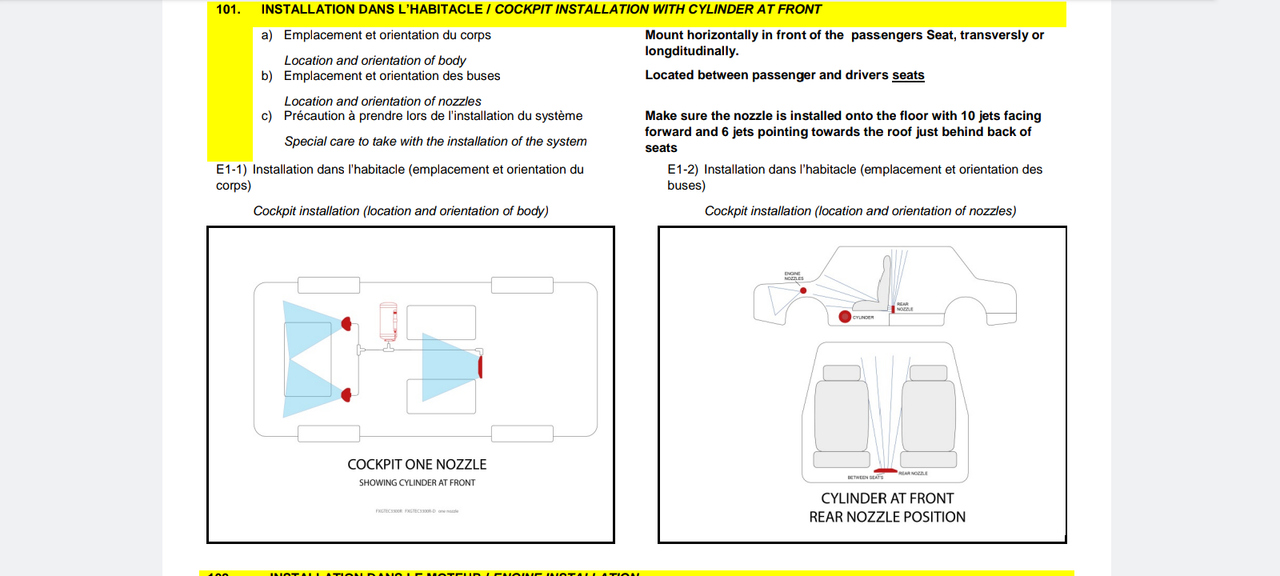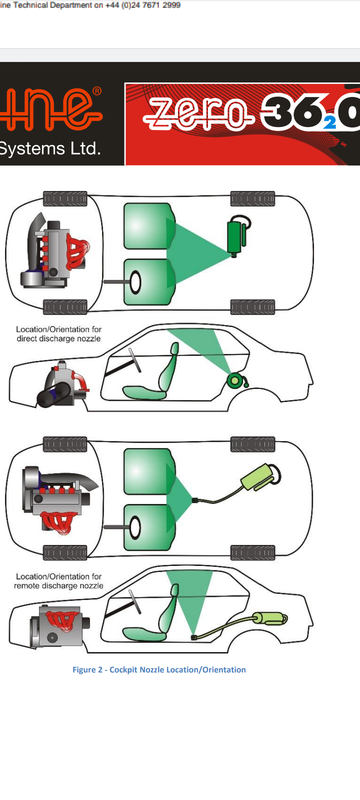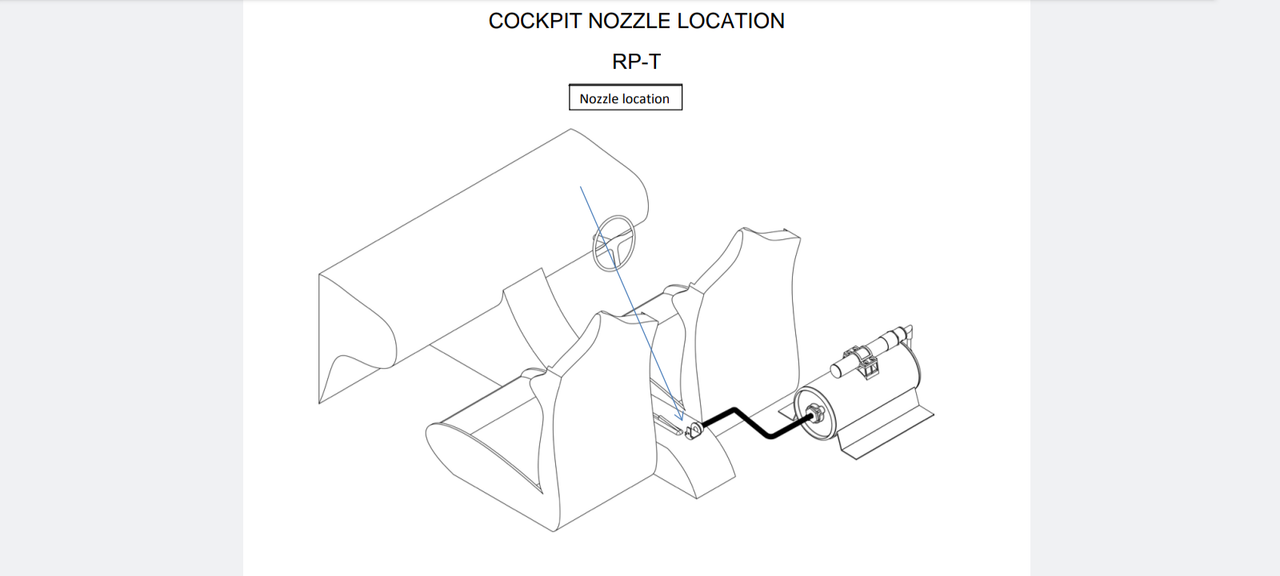Trojanole: thanks for your interest and input on this subject.
For me, this (fire suppression), and building the cage, are the too (sic) most important parts of my build - assuming I ever get off my ass and continue; stripping the interior is a great start, but I think I might be paralyzed by too much planning for the important parts, rather than just getting things done.
Did you discuss with - or show - the training captain the graphic_s_ (above) which show a roof-directed spray pattern?
Does your previous experience give you more information regarding creating a - 'survival envelope' I'll call it - for race car drivers (note: we're at "the bottom of an ocean of air", not at the bottom of an ocean of water, as in submarines)?
[snip personal employment rant until the end]
I'm ignorant in this area, yet I'm again in the habit of asking "Why?" in response to "This is the way we do it here."
And at work (for example), I'm getting too many answers from people who can't support that statement with pertinent, logical reasons.
So I still find myself questioning the reasoning behind directing the nozzles of the various suppression systems.
I can conceptualize THE ONLY reason for directing a nozzle in any particular direction to be THE BEST WAY FOR THAT MATERIAL to suppress combustion inside the cabin to support exit time - and, presumably, to NOT either blind or asphyxiate the driver.
I can conceptualize that different materials could be more effective by being sprayed in different directions; e.g.: at the base of a fire (or where combustion begins), or in the volume of the hottest flames (which might be different).
Or, as in the directions in the Lifeline 36(2)0 Installation Guide (which Lemons sells):
"Section 3 – Nozzles The cockpit nozzle (direct fit to cylinder or remote fit) discharges suppressant to the roof of the car (emphasis mine) forming a gaseous blanket which rapidly extinguishes a fire. (snip engine bay directions)"
So: I see the tension between wanting to use camping-wood-fire knowledge, or flammable-liquid-fire knowledge, which a lot of people have from life experiences or work, and which are generally directed toward the base (or fuel source) of a fire; and the specific directions of a major commercial manufacturer of a product (designed and tested to be used in Motorsports) which direct the installation upwards into the cabin volume (of a saloon-type vehicle).
I freely admit I'm ignorant in comparison to _anyone_ who has built a racecar which passed tech in _any_ series; and I know many who responded here have a lot of experience, and in many series, with presumably similar though different standards.
And the tech people have a lot of experience as well, and of course I don't.
But I'm wondering how many have actually viewed Motorsports combustion - actually in process, either live or video - and the effect of different suppression systems in response.
Do fuel lines that are run _under_ the vehicle [OEM], where the floor of the racecar is presumably contiguous metal - when they break, is the fire really suppressed by nozzles directed at the driver footwell?
Or is there more of an envelopment of the cabin, where flame comes in the windows and other openings because there's still oxygen in the cabin?
I'm suggesting the motorsports manufacturers have motorsports test environments - there are (I think FIA) standards for certification purposes - and the systems are designed around those environments.
Fire suppression material directed inside the cabin at the footwell isn't going to put out the fire if the fire is on the other side of the firewall or floorpan; likely the heat will still come through and crisp the toes.
My thought is that if the manufacturer instructions say "point the nozzles toward the roof", the manufacturer _should_ have a good reason - through experiment with their own product - for that directive.
But in my case, my current employer has directives that _someone_ came up with; that, based on my previous experience with SO MANY different employers, are contrary to consistently recognized and applied best practices, that I'm not long for my current position. I'm tired of waiting for management to take my suggestions AS TO THOSE BEST PRACTICES. And I've been fired 3 times already for telling managers they don't know what they're doing (true), and I'm sensing a similar vibe. And yes - the only consistent thing in each of those scenarios is me ;-). Turns out, in each case, I find out years later my 'suggestions' were eventually implemented - in one case resulting in $250k add on contract work for my former employer.
I can also conceive manufacturers also have people who don't have personal experience and aren't thinking, and write instructions "because that's the way it's always been done". And I'm ready to challenge that thinking.





